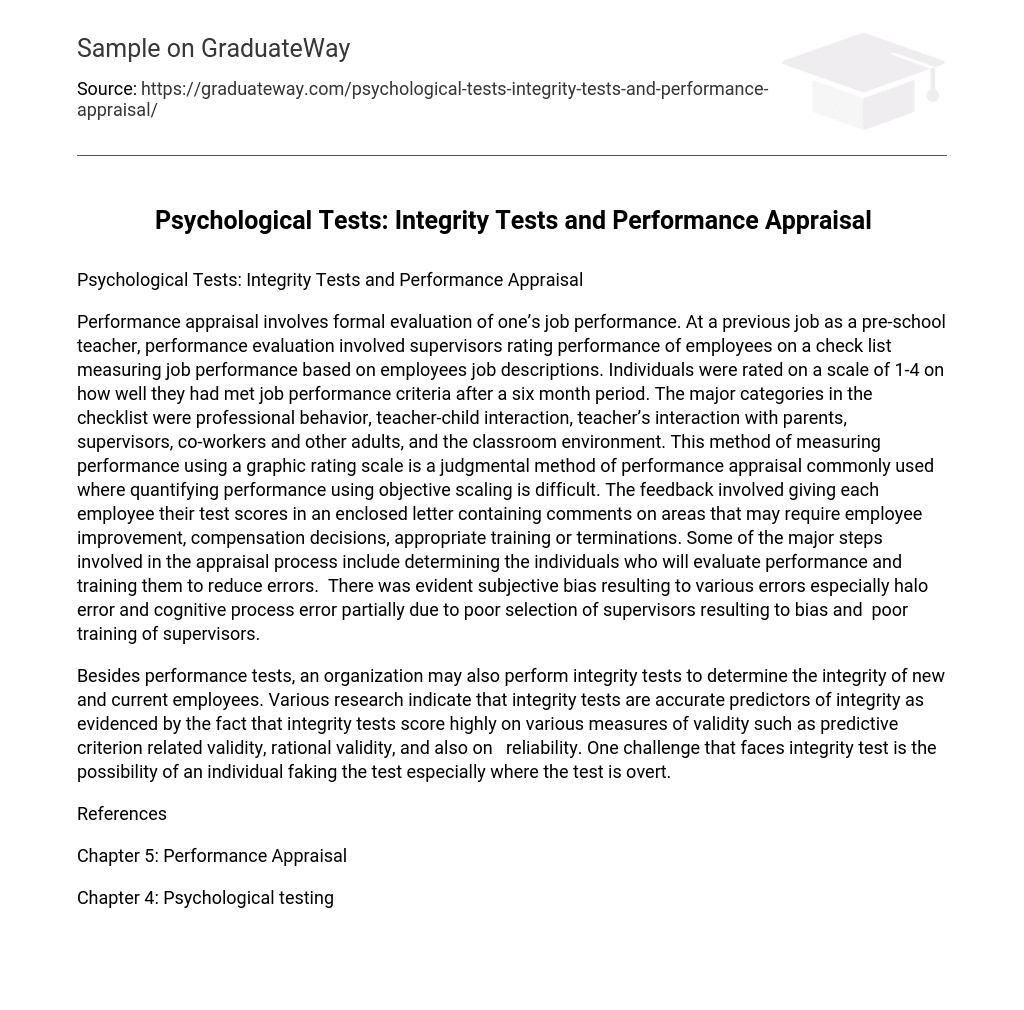Performance appraisal involves formal evaluation of one’s job performance. At a previous job as a pre-school teacher, performance evaluation involved supervisors rating performance of employees on a check list measuring job performance based on employees job descriptions. Individuals were rated on a scale of 1-4 on how well they had met job performance criteria after a six month period. The major categories in the checklist were professional behavior, teacher-child interaction, teacher’s interaction with parents, supervisors, co-workers and other adults, and the classroom environment. This method of measuring performance using a graphic rating scale is a judgmental method of performance appraisal commonly used where quantifying performance using objective scaling is difficult. The feedback involved giving each employee their test scores in an enclosed letter containing comments on areas that may require employee improvement, compensation decisions, appropriate training or terminations. Some of the major steps involved in the appraisal process include determining the individuals who will evaluate performance and training them to reduce errors. There was evident subjective bias resulting to various errors especially halo error and cognitive process error partially due to poor selection of supervisors resulting to bias and poor training of supervisors.
Besides performance tests, an organization may also perform integrity tests to determine the integrity of new and current employees. Various research indicate that integrity tests are accurate predictors of integrity as evidenced by the fact that integrity tests score highly on various measures of validity such as predictive criterion related validity, rational validity, and also on reliability. One challenge that faces integrity test is the possibility of an individual faking the test especially where the test is overt.
References
Chapter 5: Performance Appraisal
Chapter 4: Psychological testing





